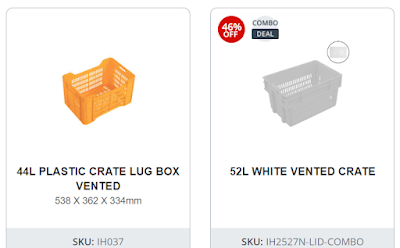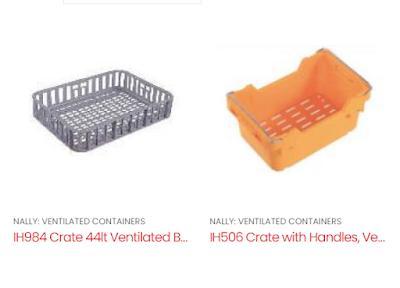Industry-Grade Plastic Crates: A Comprehensive Buyer's Guide
Material Matters:
The first and foremost consideration in choosing plastic crates Sydney is the material. High-density polyethylene (HDPE) and
polypropylene are the most common materials used for industry-grade crates.
HDPE is known for its robustness and resistance to chemicals, making it
suitable for industries dealing with various substances. Polypropylene, on the
other hand, offers flexibility and impact resistance, making it ideal for
applications that involve frequent handling and transportation.
Design and Structure:
The design of mega bins Sydney directly
influences its usability and durability. Look for crates with reinforced
corners and ribbed walls, as these features enhance structural integrity and
prevent deformation under heavy loads. Ventilation is another crucial design
aspect, particularly for industries dealing with perishable goods.
Well-designed vents facilitate air circulation, preventing the buildup of
moisture and maintaining the quality of stored items.
Size and Capacity:
Choosing the right size and capacity of plastic
crates is essential to optimize storage space and transportation efficiency.
Assess the dimensions of your products and storage areas to determine the
appropriate crate size. Additionally, consider the load-bearing capacity of the
crates to ensure they can handle the weight of your goods. Investing in crates
with stackable and nestable features can further enhance space utilization
during storage and transportation.
Temperature Resistance:
Industries dealing with extreme temperatures or
varied climate conditions should prioritize plastic crates with
temperature-resistant properties. Some crates are designed to withstand a wide
range of temperatures, ensuring the integrity of the stored goods regardless of
environmental factors. This is particularly important in industries such as
food and pharmaceuticals, where temperature control is critical for product
safety.
Cleaning and Hygiene:
Maintaining cleanliness and hygiene standards is
imperative, especially in industries handling food, pharmaceuticals, or other
sensitive products. Consider for plastic crates with smooth, easy-to-clean
surfaces. Look for crates that are resistant to chemicals and can withstand
regular cleaning processes, including pressure washing. Ensuring the hygiene of
your plastic crates contributes to the overall safety and quality of your
products.
Customization Options:
Every industry has unique requirements, and the
ability to customize plastic crates can be a significant advantage. Some
suppliers offer customization options such as company logos, color choices, and
specific features tailored to your industry needs. Investing in crates that
align with your branding and operational requirements can enhance the
professionalism of your logistics processes.
Durability and Longevity:
While the initial cost of plastic crates may vary,
it's essential to consider the long-term durability and longevity of the
investment. Look for crates with a track record of enduring heavy usage without
compromising structural integrity. A higher upfront cost for durable crates can
translate into long-term savings by reducing the frequency of replacements and
minimizing the risk of damage to your goods.
Conclusion:
In the world of logistics and industrial operations, the choice of plastic crates may seem like a minor decision. However, investing time and consideration into selecting the right industry-grade plastic crates can significantly impact the efficiency, safety, and overall success of your business. By focusing on material quality, design, size, temperature resistance, cleaning capabilities, customization options, and durability, you can make informed choices that align with your specific industry needs. A well-chosen plastic crate is more than just a container; it's a key player in the smooth and reliable flow of goods within your business operations.




Comments
Post a Comment